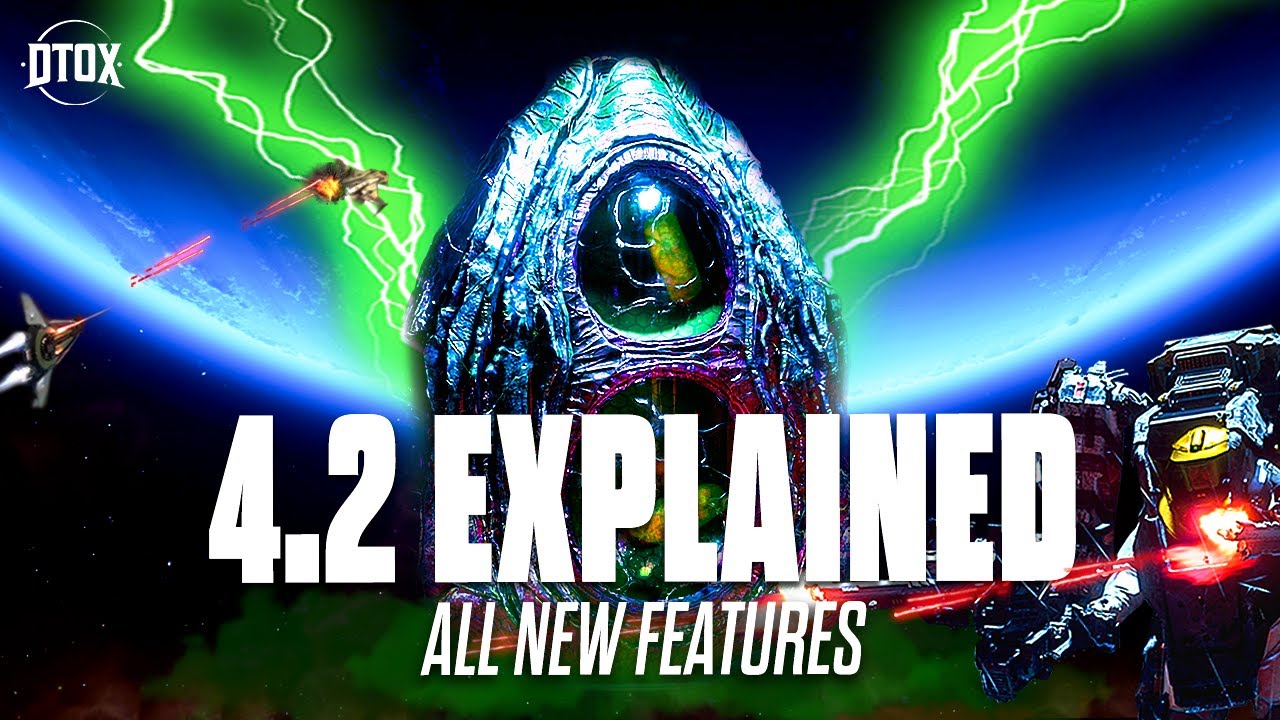Star Citizen’s 4.2 update introduces the new Stormbreaker PvPvE event featuring hazardous environmental challenges and intense combat, along with overhauled missile mechanics, dynamic weather effects, and quality-of-life improvements. Additionally, it adds new vehicles and weapons, enhances immersion with weather and environmental hazards, and lays groundwork for future survival gameplay despite being a smaller update focused on refining existing systems.
Star Citizen’s 4.2 update introduces a range of new features and improvements, though it is smaller compared to previous quarterly updates in 2025. While it does not yet include long-anticipated systems like engineering, it expands on existing gameplay elements and adds fresh content, including a new persistent sandbox activity called Stormbreaker. This multi-phase PvPvE event tasks players with infiltrating the Lazarus complex on Pyro 1, involving hacking, combat against NPC guards, and environmental hazards like radiation and dangerous distortion storms. Players must first acquire high-level clearance from Pharaoh data centers on Pyro 4, then navigate through security and stormy conditions to reach the complex and ultimately summon and defeat the Apex Valakar for valuable rewards.
The Stormbreaker event introduces new gameplay mechanics such as wearing hazmat suits and lab coats to access restricted areas, as well as puzzle elements within the Lazarus complex. Players must carefully manage their resources and prepare for intense firefights against waves of guards while completing objectives like retrieving key cards and handling the radioactive Valakar egg. Successfully defeating the Valakar yields special loot, including teeth and pearls, which can be traded for favors with the NPC Wiccolo to obtain unique rewards like new variants of the Atlas power suit mech. These suits offer different utilities, including radiation protection and jump jet capabilities, though their usefulness remains somewhat niche at this stage.
Missile and torpedo mechanics have been overhauled to improve balance in ship combat. Minimum lock distances have been increased for most missile types, giving targets more time to react with countermeasures, which have also been enhanced to be more effective while requiring fewer flares. Additionally, missiles now track targets better but are less likely to reacquire them if dodged. Torpedoes of size 9 and above now have a minimum arming distance of 1.5 km to prevent instant component destruction at close range, addressing long-standing issues with powerful ship-killing tactics. Specific missile types like the Ballista’s Helien and Scimitar have received tailored tweaks to improve their functionality.
The update also brings the first substantial weather effects to Star Citizen, including dynamic rain on Hurston, ArcCorp, and Pyro 1, with the latter featuring dangerous distortion storms. These storms cause ship systems to fail if flown through for too long, adding a new environmental hazard that affects navigation and combat. Although there are some visual and audio bugs, the introduction of weather is a major step forward for immersion and gameplay variety, potentially paving the way for more dynamic environmental systems in future updates. Other quality-of-life improvements include a revamped scanning UI with better range and reliability, reduced refining times for mining, and improved ground vehicle physics to prevent bouncing on ship grids.
Finally, the update adds new vehicles and weapons, such as the military-focused Prowler utility cargo variant introduced during Alien Week, which sacrifices some cargo space and speed for durability. Verified Off-World Laser Technologies also debuts the Vault Prism laser shotgun, a high-rate-of-fire close-quarters weapon with overheating mechanics but no special electrical effects. Minor UI and gameplay tweaks like clearer radiation exposure indicators hint at longer-term survival gameplay ambitions. Overall, while 4.2 is a smaller patch, it delivers meaningful content and systems that enhance the Star Citizen experience, though some features still require stabilization for consistent performance.
